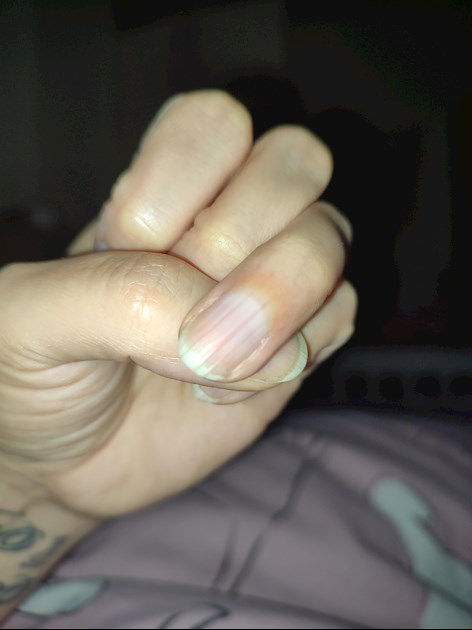Have you ever wondered what those vertical ridges on your fingernails mean? Could they be a sign of something more serious, or are they simply a natural part of aging? A lack of essential vitamins and minerals may indeed cause these ridges to appear, but there's much more to the story. Understanding the underlying causes of cracked nails and ridges can help you take better care of your health.
Nails that are cracked, split, or brittle can sometimes indicate a health problem. However, many factors contribute to nail conditions, including environmental exposure, nutritional deficiencies, and even genetic predispositions. Vertical ridges, in particular, are often associated with aging, but they can also signal vitamin deficiencies such as folate, B12, and vitamin A. These nutrients play critical roles in maintaining healthy nails and overall well-being. For instance, if your diet lacks sufficient vitamin A, it might manifest as ridges in your fingernails. Similarly, insufficient intake of B vitamins like folate can lead to similar issues.
| Category | Information |
|---|---|
| Name | Vertical Ridges and Cracked Nails |
| Common Causes | Vitamin deficiencies (A, B12, folate), mineral imbalances (iron, zinc, calcium) |
| Symptoms | Ridges running vertically along the nail bed, brittle nails, splitting |
| Treatment Options | Increase intake of fresh fruits, vegetables, fortified cereals; consider supplements under medical guidance |
| Preventive Measures | Maintain a balanced diet, protect nails from harsh chemicals, stay hydrated |
| Reference | Mayo Clinic |
Fingernail ridges manifest as raised, thin lines running vertically along the nail bed from the cuticle to the tip. While they are typically harmless, especially in older adults, they can sometimes point to underlying nutrient deficiencies. Horizontal ridges, on the other hand, may indicate trauma or illness affecting nail growth. It is important to differentiate between normal aging patterns and potential health concerns when evaluating nail changes.
What do vitamin B12 deficiency nails look like? Individuals with this condition often experience not only ridges but also discoloration, brittleness, and slower nail growth. B12 plays a vital role in red blood cell production and nerve function, so its deficiency can have widespread effects. Foods rich in B12 include animal products like meat, fish, eggs, and dairy. Vegans or those with absorption issues may need supplementation after consulting a healthcare provider.
Iron deficiency anemia is another common culprit behind nail abnormalities. This condition occurs when the body lacks enough iron to produce hemoglobin, which carries oxygen in the blood. Weak, spoon-shaped nails, known as koilonychia, are characteristic signs of severe iron deficiency. Increasing iron intake through dietary sources such as spinach, lentils, and lean meats, or taking prescribed supplements, can improve symptoms over time.
Calcium and zinc deficiencies also affect nail health. Calcium strengthens nails while zinc promotes their growth and repair. Dairy products, leafy greens, and fortified foods provide calcium, whereas zinc-rich options include seafood, nuts, seeds, and whole grains. Balancing these nutrients ensures stronger, healthier nails.
Environmental factors cannot be overlooked either. Exposure to harsh chemicals, frequent handwashing without moisturizing, and prolonged immersion in water can weaken nails and exacerbate existing problems. Protecting nails with gloves during cleaning tasks and applying hydrating creams regularly helps maintain their integrity.
Hydration levels significantly impact nail health too. Dehydration leads to dry, brittle nails prone to cracking. Drinking adequate water daily supports all bodily functions, including nail formation. Additionally, consuming omega-3 fatty acids found in fish, flaxseeds, and walnuts enhances nail flexibility and resilience.
While most cases of vertical ridges and cracked nails stem from benign causes, persistent or worsening symptoms warrant professional evaluation. Dermatologists and nutritionists can identify specific deficiencies or medical conditions contributing to nail abnormalities and recommend appropriate treatments. Regular check-ups and open communication with healthcare providers ensure timely intervention and optimal outcomes.
Ultimately, paying attention to your nails offers valuable insights into your overall health. By addressing any identified deficiencies or adopting preventive measures, you can promote strong, smooth nails that reflect vitality and wellness. Remember, small changes in lifestyle and nutrition can make a big difference in how your nails look and feel.




